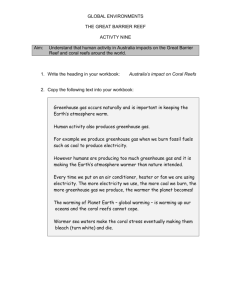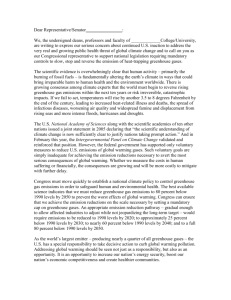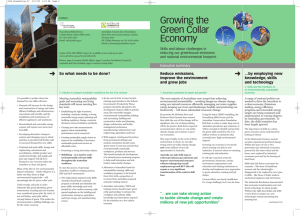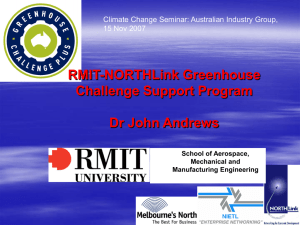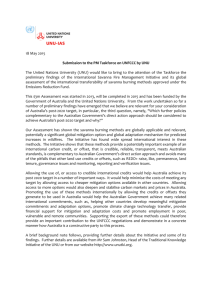Earth Hour - Statistics and Impacts
advertisement
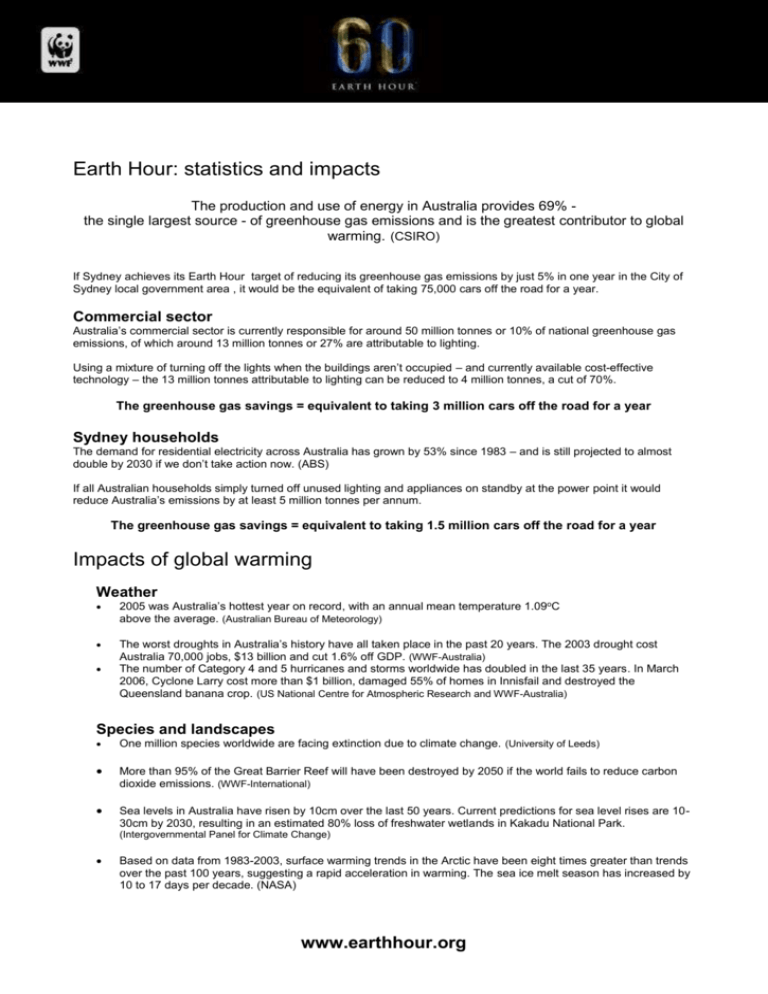
Earth Hour: statistics and impacts The production and use of energy in Australia provides 69% the single largest source - of greenhouse gas emissions and is the greatest contributor to global warming. (CSIRO) If Sydney achieves its Earth Hour target of reducing its greenhouse gas emissions by just 5% in one year in the City of Sydney local government area , it would be the equivalent of taking 75,000 cars off the road for a year. Commercial sector Australia’s commercial sector is currently responsible for around 50 million tonnes or 10% of national greenhouse gas emissions, of which around 13 million tonnes or 27% are attributable to lighting. Using a mixture of turning off the lights when the buildings aren’t occupied – and currently available cost-effective technology – the 13 million tonnes attributable to lighting can be reduced to 4 million tonnes, a cut of 70%. The greenhouse gas savings = equivalent to taking 3 million cars off the road for a year Sydney households The demand for residential electricity across Australia has grown by 53% since 1983 – and is still projected to almost double by 2030 if we don’t take action now. (ABS) If all Australian households simply turned off unused lighting and appliances on standby at the power point it would reduce Australia’s emissions by at least 5 million tonnes per annum. The greenhouse gas savings = equivalent to taking 1.5 million cars off the road for a year Impacts of global warming Weather 2005 was Australia’s hottest year on record, with an annual mean temperature 1.09oC above the average. (Australian Bureau of Meteorology) The worst droughts in Australia’s history have all taken place in the past 20 years. The 2003 drought cost Australia 70,000 jobs, $13 billion and cut 1.6% off GDP. (WWF-Australia) The number of Category 4 and 5 hurricanes and storms worldwide has doubled in the last 35 years. In March 2006, Cyclone Larry cost more than $1 billion, damaged 55% of homes in Innisfail and destroyed the Queensland banana crop. (US National Centre for Atmospheric Research and WWF-Australia) Species and landscapes One million species worldwide are facing extinction due to climate change. (University of Leeds) More than 95% of the Great Barrier Reef will have been destroyed by 2050 if the world fails to reduce carbon dioxide emissions. (WWF-International) Sea levels in Australia have risen by 10cm over the last 50 years. Current predictions for sea level rises are 1030cm by 2030, resulting in an estimated 80% loss of freshwater wetlands in Kakadu National Park. (Intergovernmental Panel for Climate Change) Based on data from 1983-2003, surface warming trends in the Arctic have been eight times greater than trends over the past 100 years, suggesting a rapid acceleration in warming. The sea ice melt season has increased by 10 to 17 days per decade. (NASA) www.earthhour.org Humans By 2100, up to 15,000 Australians could die every year from heat-related illnesses and the dengue transmission zone could reach as far south as Brisbane and Sydney if we continue to allow [greenhouse gas] emissions to increase. (Australian Medical Association) www.earthhour.org



